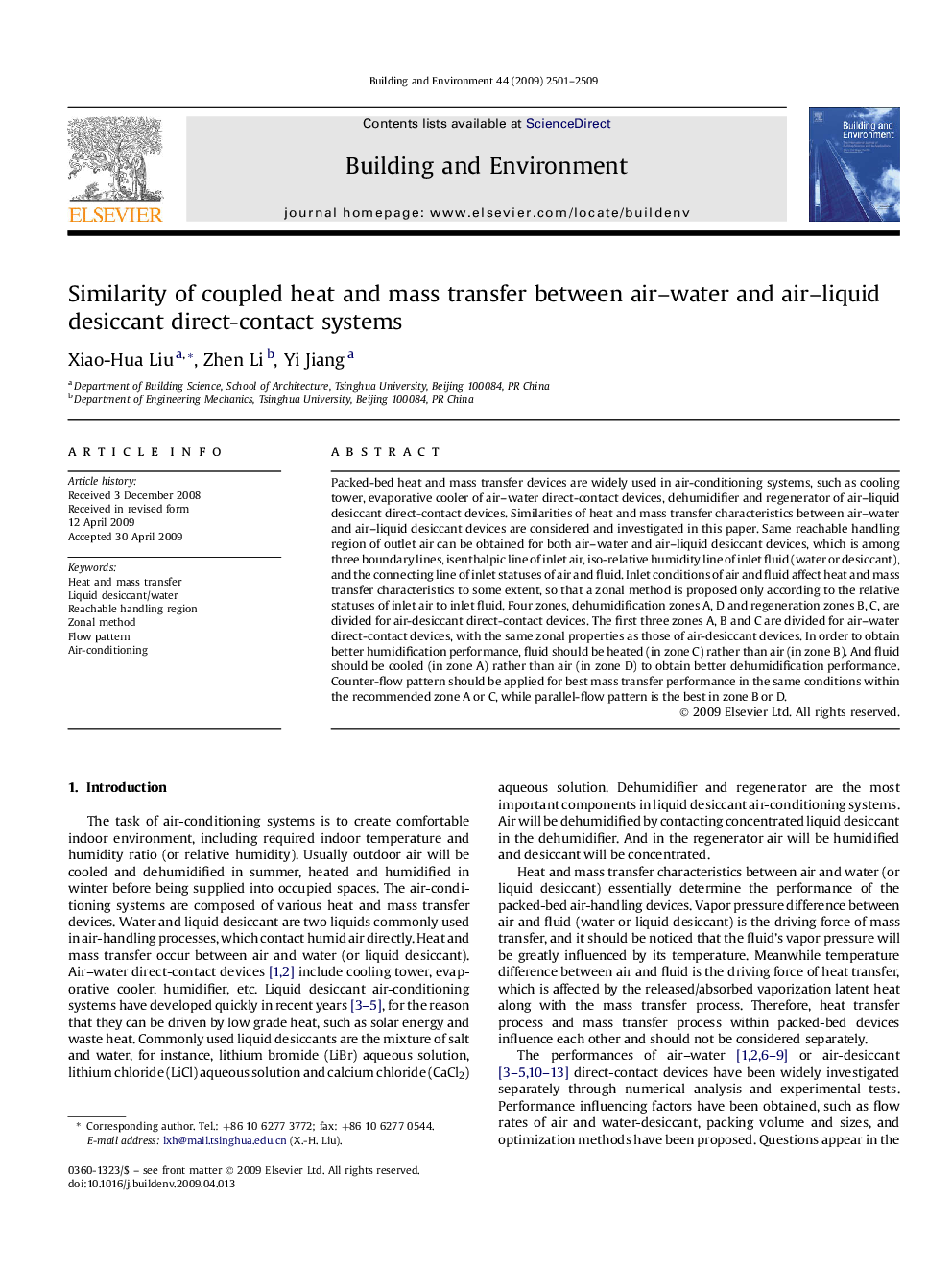| Article ID | Journal | Published Year | Pages | File Type |
|---|---|---|---|---|
| 249546 | Building and Environment | 2009 | 9 Pages |
Packed-bed heat and mass transfer devices are widely used in air-conditioning systems, such as cooling tower, evaporative cooler of air–water direct-contact devices, dehumidifier and regenerator of air–liquid desiccant direct-contact devices. Similarities of heat and mass transfer characteristics between air–water and air–liquid desiccant devices are considered and investigated in this paper. Same reachable handling region of outlet air can be obtained for both air–water and air–liquid desiccant devices, which is among three boundary lines, isenthalpic line of inlet air, iso-relative humidity line of inlet fluid (water or desiccant), and the connecting line of inlet statuses of air and fluid. Inlet conditions of air and fluid affect heat and mass transfer characteristics to some extent, so that a zonal method is proposed only according to the relative statuses of inlet air to inlet fluid. Four zones, dehumidification zones A, D and regeneration zones B, C, are divided for air-desiccant direct-contact devices. The first three zones A, B and C are divided for air–water direct-contact devices, with the same zonal properties as those of air-desiccant devices. In order to obtain better humidification performance, fluid should be heated (in zone C) rather than air (in zone B). And fluid should be cooled (in zone A) rather than air (in zone D) to obtain better dehumidification performance. Counter-flow pattern should be applied for best mass transfer performance in the same conditions within the recommended zone A or C, while parallel-flow pattern is the best in zone B or D.
